- Choosing the Right Location
- Soil Preparation and Fertilization
- Planting Balsamina Seeds
- Gather the Necessary Supplies
- Prepare the Planting Container
- Plant the Seeds
- Provide Proper Care
- Conclusion
- Watering and Irrigation
- 1. Watering Schedule
- 2. Soil Moisture
- 3. Deep Watering
- 4. Avoid Overhead Watering
- 5. Consider Irrigation Systems
- 6. Mulching
- 7. Rainwater Harvesting
- Providing Adequate Sunlight
- Pest and Disease Control
- Pests
- Diseases
- Pruning and Training
- Harvesting and Storing Balsamina Seeds
- 1. Timing the Harvest
- 2. Gathering the Seeds
- 3. Separating the Seeds
- 4. Cleaning the Seeds
- 5. Drying the Seeds
- 6. Storing the Seeds
- Questions and Answers:
- How do I start balsamina garden seedlings?
- When is the best time to start balsamina garden seedlings?
- What kind of soil should I use for balsamina garden seedlings?
- How often should I water balsamina garden seedlings?
- How long does it take for balsamina garden seedlings to germinate?
- Can I plant balsamina garden seedlings in containers?
- Videos: Don’t Touch This Plant
Balsamina, commonly known as impatiens or touch-me-not, is a beautiful flowering plant that can add vibrant colors to your garden. Growing balsamina garden seedlings can be a rewarding experience, but it requires proper care and attention. In this expert gardening guide, we will provide you with useful tips to help you successfully grow and nurture balsamina seedlings.
1. Start with the right seeds: When choosing balsamina seeds, look for a reputable supplier to ensure you get high-quality seeds. Opt for a variety that suits your garden’s climate and sunlight conditions. Balsamina seeds are small and should be handled with care.
2. Prepare the perfect soil: Balsamina plants prefer well-draining soil that is rich in organic matter. Before sowing the seeds, prepare the soil by loosening it with a garden fork and removing any weeds or debris. Mix in compost or well-rotted manure to improve soil fertility.
3. Sow seeds indoors: Balsamina seeds are best started indoors, as they require warmth and a controlled environment to germinate. Fill seed trays with a seedling mix and sow the seeds on the surface. Gently press the seeds into the soil, but do not cover them as they require light to germinate.
4. Provide adequate light: Balsamina seedlings need bright but indirect light to grow properly. Place the seed trays near a south-facing window or use fluorescent grow lights to provide sufficient light. Avoid direct sunlight, as it can scorch the delicate seedlings.
5. Water carefully: Keep the soil evenly moist but not waterlogged. Overwatering can lead to root rot, while underwatering can cause stunted growth. Use a spray bottle or a watering can with a fine nozzle to water the seedlings gently. Avoid wetting the leaves, as this can promote fungal diseases.
Tip: To check if your balsamina seedlings need water, gently press your finger onto the soil surface. If it feels dry, it’s time to water.
6. Transplanting seedlings: When the balsamina seedlings have developed a few true leaves, they can be transplanted into individual pots or directly into the garden. Handle the seedlings carefully to avoid damaging the delicate roots. Harden off the seedlings by gradually exposing them to outdoor conditions before transplanting.
7. Provide proper support: Balsamina plants can become tall and bushy, so it’s important to provide them with support. Use stakes or cages to prevent the plants from flopping over or breaking under their own weight. This will help maintain their upright growth and ensure proper air circulation.
By following these expert gardening tips, you can successfully grow balsamina garden seedlings and enjoy their stunning blooms throughout the growing season. Remember to give them appropriate care, including regular watering, occasional fertilizer application, and deadheading to promote continuous flowering. With a little patience and dedication, your balsamina plants will reward you with a colorful and vibrant garden display.
Choosing the Right Location
- Choose a location that receives full or partial sunlight. Balsamina seedlings thrive in bright, indirect light.
- Ensure that the location has well-draining soil. Balsamina plants prefer soil that does not hold excess moisture.
- Avoid areas with strong winds that can damage the delicate seedlings.
- Consider the temperature requirements of balsamina seedlings. They prefer temperatures between 65-75°F (18-24°C) during the day and around 60°F (15°C) at night. Avoid extremely hot or cold locations.
By choosing the right location for your balsamina seedlings, you can create an ideal environment for their growth and ensure healthy plants. Remember to provide adequate sunlight, well-draining soil, protection from strong winds, and appropriate temperatures for optimal growth.
Soil Preparation and Fertilization
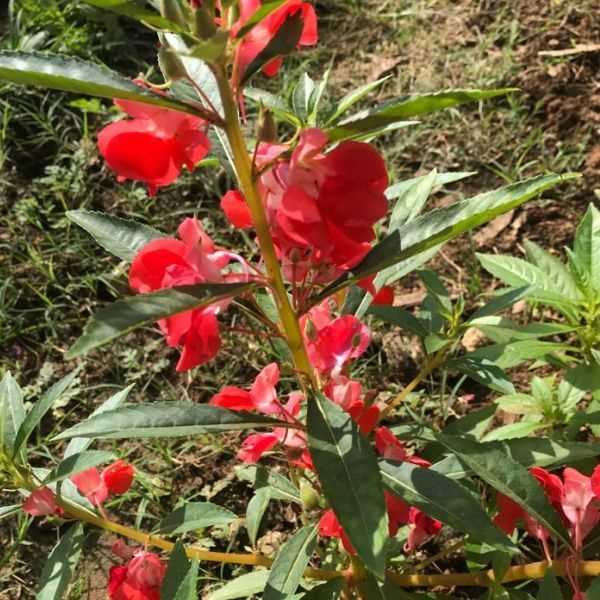
Proper soil preparation and fertilization are key factors in successfully growing balsamina garden seedlings. Follow these tips to ensure your plants have the nutrients they need to thrive:
- Start by choosing a well-draining soil mix that is rich in organic matter. Balsaminas prefer a soil pH between 6.0 and 7.0, so it’s important to test your soil and make any necessary adjustments before planting.
- Before planting the seedlings, prepare the soil by removing any weeds or debris. Loosen the soil using a garden fork or tiller to promote better root penetration and drainage.
- Add compost or well-rotted manure to the soil to improve its fertility and structure. These organic materials will also contribute essential nutrients to the plants.
- If your soil is lacking in nutrients, consider incorporating a balanced slow-release fertilizer or organic fertilizer into the soil before planting. This will provide the plants with a steady supply of nutrients throughout the growing season.
- Alternatively, you can apply a water-soluble fertilizer every 2-3 weeks during the growing season. Choose a fertilizer with a balanced NPK ratio, such as 10-10-10 or 20-20-20, and follow the manufacturer’s instructions for application rates.
- When applying fertilizer, be careful not to over-fertilize as this can burn the plants and lead to excessive foliage growth at the expense of flower production. Always follow the recommended dosage and avoid applying fertilizer directly to the plant’s foliage.
- Regularly monitor the soil moisture levels and adjust watering accordingly. Balsaminas prefer consistently moist but not waterlogged soil. Avoid letting the soil dry out completely as this can stress the plants.
- Mulch the soil around the seedlings with a layer of organic mulch, such as straw or wood chips, to help retain moisture, suppress weeds, and regulate soil temperature.
By providing your balsamina garden seedlings with well-prepared soil and proper fertilization, you can ensure they have the best possible start and will grow into healthy, vibrant plants.
Planting Balsamina Seeds
Planting balsamina seeds is a straightforward process that can be done in a few simple steps. Here are some tips to help you successfully grow balsamina seedlings:
Gather the Necessary Supplies
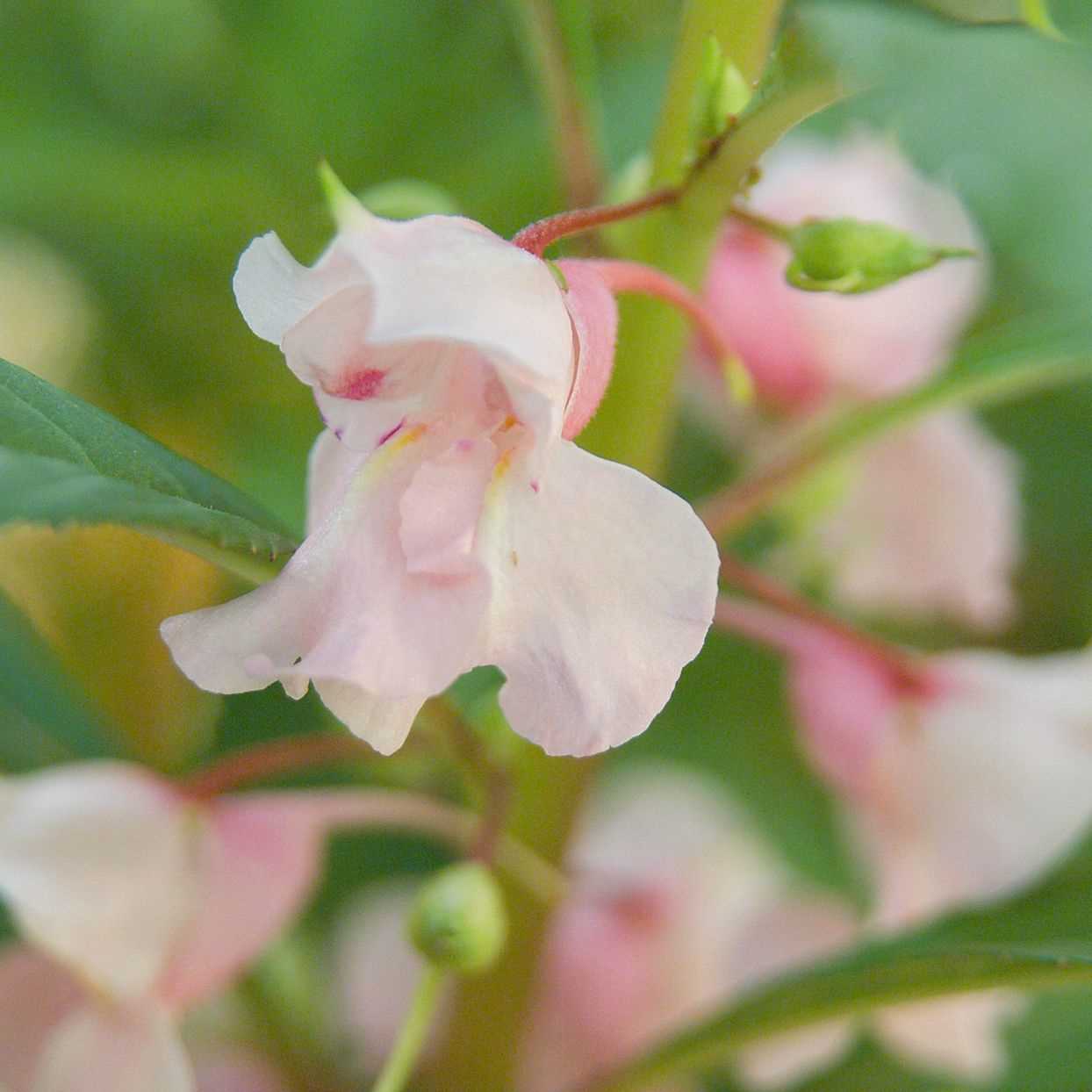
- Balsamina seeds
- Potting soil mix
- Planting container or seed tray
- Watering can or spray bottle
Prepare the Planting Container
Choose a container or seed tray that has drainage holes at the bottom to prevent waterlogging. Fill the container with a potting soil mix, leaving about an inch of space at the top for watering.
Plant the Seeds
- Moisten the potting soil mix slightly before planting the seeds. This will help the seeds settle into the soil.
- Place the balsamina seeds on the surface of the potting soil, spacing them about an inch apart.
- Lightly press the seeds into the soil, ensuring good seed-to-soil contact.
- Cover the seeds with a thin layer of potting soil, approximately 1/4 inch thick. This will help keep the seeds in place and protect them.
Provide Proper Care
Once the seeds are planted, it’s important to provide them with proper care to ensure their successful germination and growth:
- Place the container in a warm location with indirect sunlight. Balsamina seeds require temperatures between 70-80 degrees Fahrenheit (21-27 degrees Celsius) to germinate.
- Keep the potting soil consistently moist but not soggy. Water the seeds gently using a watering can or spray bottle to avoid displacing the seeds.
- Germination usually takes about 10-14 days. Once the seedlings emerge, thin them by removing weaker ones, leaving only the strongest seedling in each planting spot.
- As the seedlings grow, provide them with bright, indirect sunlight for at least 6-8 hours per day.
- Transplant the seedlings into larger pots or your garden bed once they have developed 2-3 sets of true leaves.
Conclusion
By following these simple steps, you can successfully plant balsamina seeds and ensure the healthy growth of your seedlings. With proper care and attention, you’ll soon be enjoying beautiful balsamina flowers in your garden.
Watering and Irrigation
Proper watering is essential for the healthy growth of balsamina garden seedlings. Here are some tips for watering and irrigation:
1. Watering Schedule
Establish a regular watering schedule for your balsamina seedlings. Keep in mind that overwatering can lead to root rot, while underwatering can cause the plants to wilt. Check the moisture level of the soil regularly to determine when watering is necessary.
2. Soil Moisture
It’s important to maintain the right level of soil moisture for balsamina seedlings. Water the plants when the top inch of soil feels dry to the touch. Use your fingers to assess the moisture level, and adjust your watering routine accordingly.
3. Deep Watering
When watering balsamina seedlings, it’s best to give them a deep watering rather than a light, surface watering. This encourages the roots to grow deeper and helps the plants develop strong, healthy root systems. Water slowly and deeply to ensure that the water reaches the roots.
4. Avoid Overhead Watering
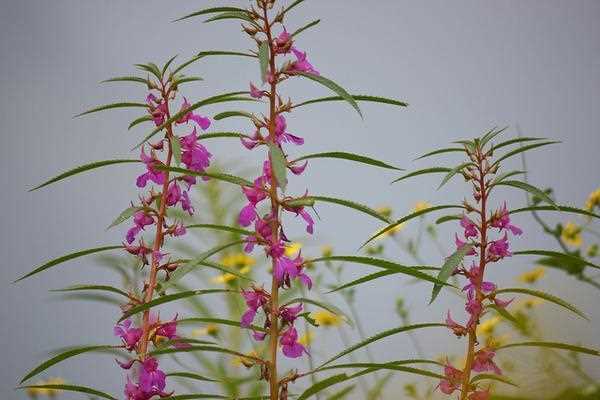
Avoid overhead watering, especially when the seedlings are young. Water droplets on the leaves can act as magnifying glasses and cause sunburn or scorching. Instead, direct the water towards the base of the plants to ensure that the roots receive the water.
5. Consider Irrigation Systems
If you have a large balsamina garden or want to simplify the watering process, consider installing an irrigation system. Drip irrigation or soaker hoses can provide a slow, consistent water supply directly to the roots. This helps to prevent water wastage and ensures even watering.
6. Mulching
Applying a layer of mulch around the balsamina seedlings can help conserve moisture in the soil and reduce evaporation. This can be especially beneficial during hot, dry periods. Use organic mulch, such as dried leaves or wood chips, and apply it around the base of the plants, leaving a small gap to prevent moisture-related issues.
7. Rainwater Harvesting
Consider collecting rainwater to use for watering your balsamina seedlings. Rainwater is free from chemicals and additives found in tap water, making it a healthier choice for your plants. Set up a rain barrel or container to collect rainwater, and use it to water your seedlings when needed.
Following these watering and irrigation tips will help ensure the successful growth of your balsamina garden seedlings. Remember to monitor the moisture levels and adjust your watering routine as needed to keep your plants healthy and thriving.
Providing Adequate Sunlight
When growing balsamina garden seedlings, it is important to provide them with adequate sunlight for optimal growth and flowering. Balsaminas are sun-loving plants that require at least 6 to 8 hours of direct sunlight each day to thrive.
To ensure your balsamina seedlings receive enough sunlight, consider the following tips:
- Choose the right location: Select a sunny spot in your garden that receives the required amount of sunlight. Avoid shaded areas or places that are blocked by trees or buildings.
- Monitor the sun’s movement: Observe how the sun moves across your garden throughout the day. This will help you identify the best location to place your seedlings where they will receive continuous sunlight.
- Provide shade during extreme heat: While balsaminas thrive in sunlight, they can suffer from heat stress during extremely hot days. Consider providing some shade to protect the plants during the hottest part of the day.
Remember that each plant may have slightly different sunlight requirements, so it is essential to read the specific instructions provided with your balsamina seeds or seedlings.
By giving your balsamina seedlings the right amount of sunlight, you can ensure they grow healthy and produce vibrant flowers throughout the growing season.
Pest and Disease Control
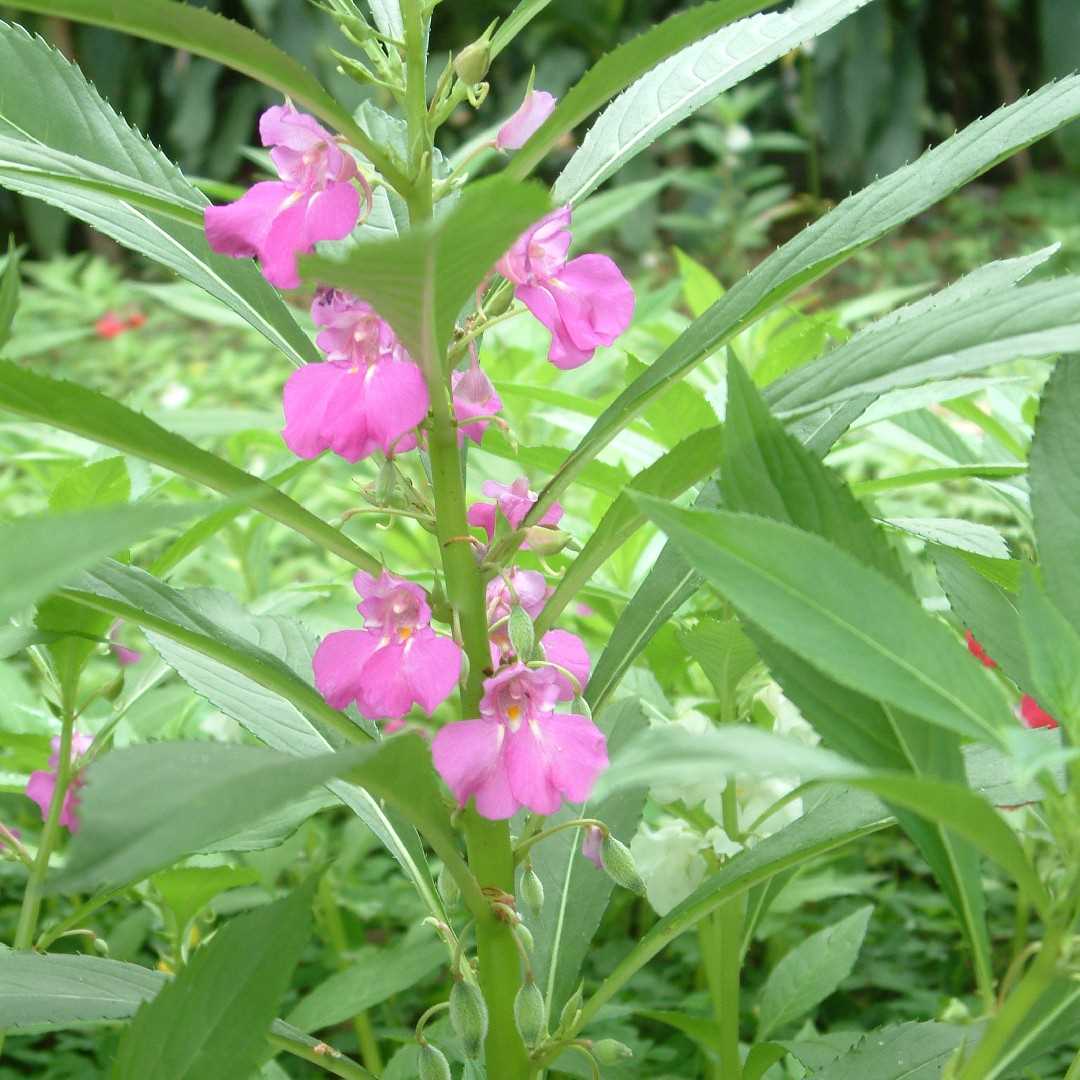
Pests
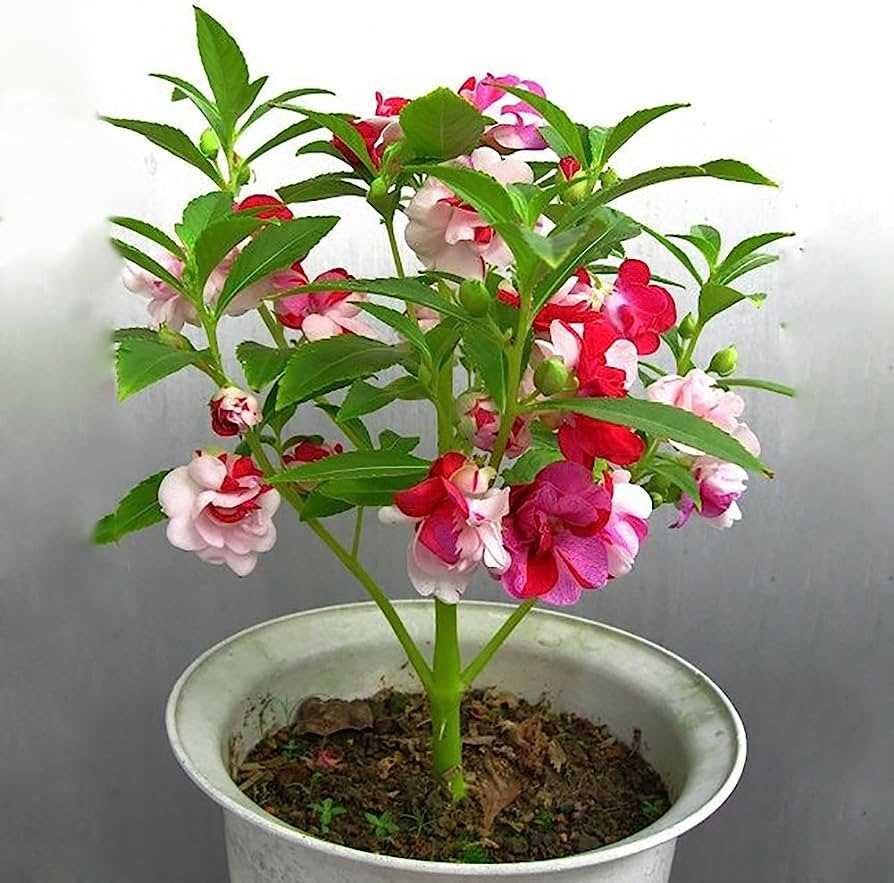
- Aphids: These tiny insects can be controlled by spraying the seedlings with a strong stream of water or by using an insecticidal soap.
- Slugs and Snails: These pests can be hand-picked or trapped using beer or a slug bait. Creating barriers like crushed eggshells or diatomaceous earth can also help prevent them from reaching the seedlings.
- Caterpillars: Use natural predators like birds or manually remove them from the seedlings. If the infestation is severe, you can use an insecticide specifically formulated for caterpillar control.
- Spider Mites: These pests can be controlled by spraying the seedlings with water regularly to maintain humidity. In severe cases, use an insecticidal soap or a miticide.
Diseases
- Fungal Diseases: To prevent fungal diseases, avoid overwatering the seedlings and ensure proper air circulation. Remove any infected leaves or plants immediately to prevent the spread. Use a fungicide if necessary.
- Bacterial Diseases: Bacterial diseases are difficult to control once established. Prevention is key, so make sure to sterilize your tools and containers before planting. Use disease-resistant seed varieties and avoid overhead watering.
Regularly monitoring your balsamina garden seedlings for pests and diseases is crucial to maintaining their health and promoting optimal growth. By taking preventive measures and promptly addressing any issues that arise, you can ensure a successful and thriving garden.
Pruning and Training
- Regular pruning is essential for maintaining the health and shape of your balsamina garden seedlings.
- Prune your seedlings by removing any dead or diseased branches using a sharp pair of garden scissors or pruning shears.
- Trim back any overgrown branches or stems to encourage branching and bushier growth.
- When pruning, make clean cuts just above a leaf node or bud to promote new growth.
- Training your balsamina garden seedlings involves guiding the growth of the plant to a desired shape or direction.
- You can use stakes or trellises to support the seedlings and help them grow upright.
- Secure the seedling to the stake or trellis using soft plant ties or twine, being careful not to tie it too tightly to avoid damaging the stems.
- Regularly check the ties and adjust them as needed to accommodate the seedling’s growth.
- Consider using pruning techniques such as pinching or tip pruning to encourage more compact and bushier growth.
- Pinching involves using your fingers or pruning shears to remove the top few inches of new growth, which will stimulate branching and create a fuller plant.
- Tip pruning is similar to pinching, but you only remove the tips of the branches instead of the entire stem.
Harvesting and Storing Balsamina Seeds
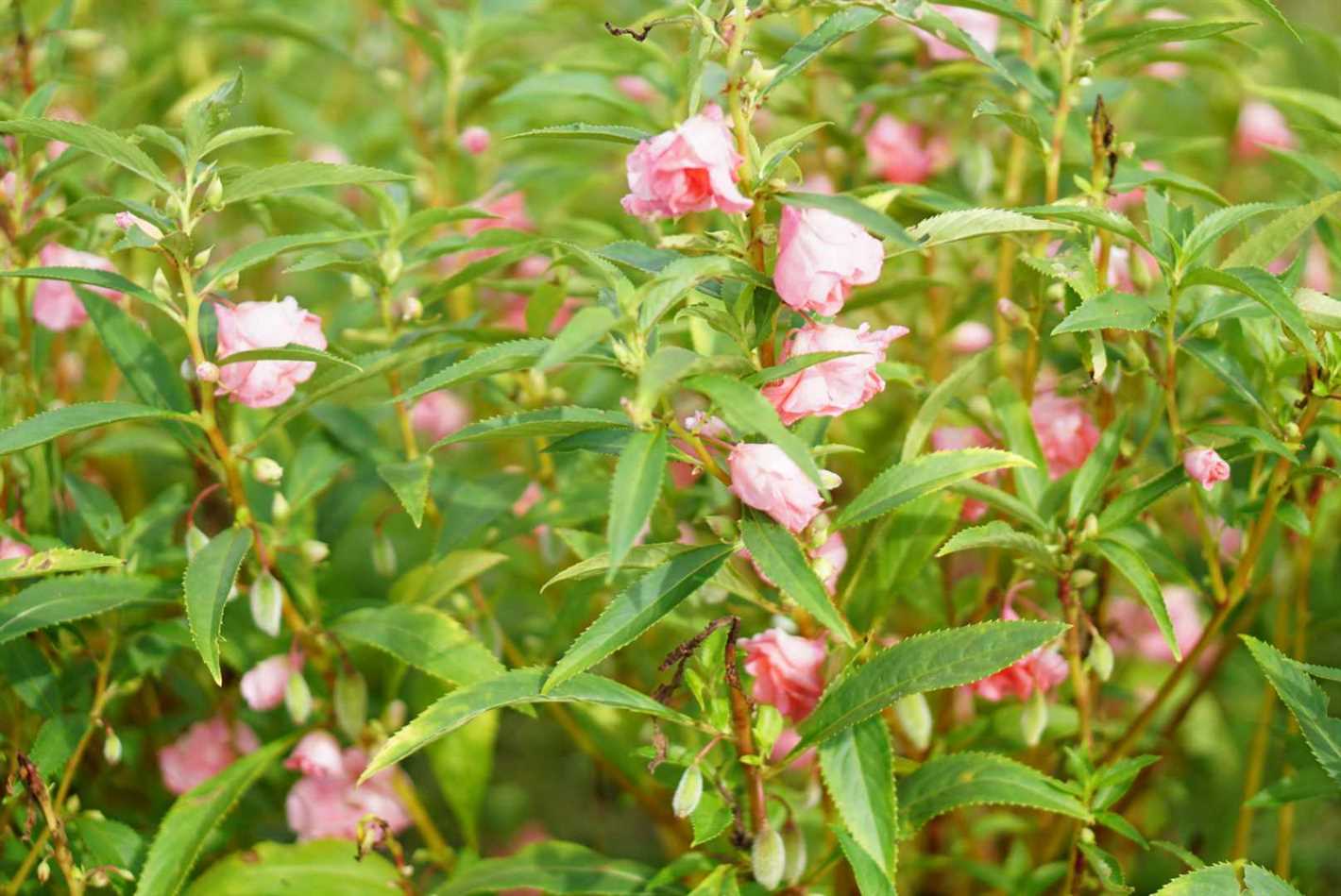
1. Timing the Harvest
When it comes to harvesting balsamina seeds, timing is crucial. The seeds should be harvested when the seedpods are fully mature but haven’t yet burst open on their own. This is usually around 4-6 weeks after the flowers have wilted and fallen off.
2. Gathering the Seeds
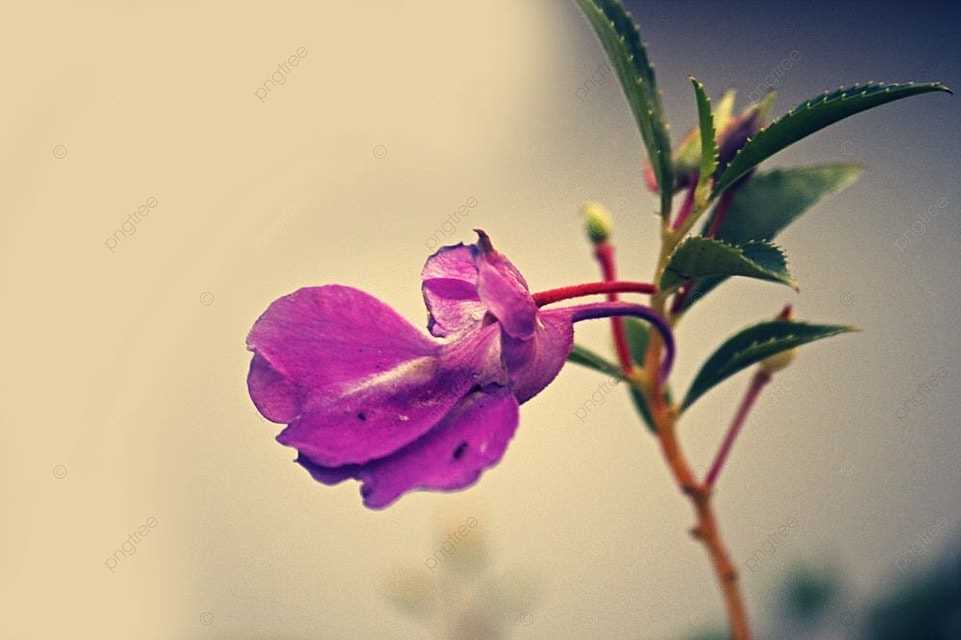
To gather the balsamina seeds, start by inspecting the seedpods. Look for dried pods that have turned brown and feel firm to the touch. Gently squeeze the pod to see if it pops open easily. If it does, the seeds are ready for harvest.
Hold the seedpod over a container or a piece of paper and carefully break it open. This will release the seeds. If the pods are not yet dry enough to open easily, you can let them dry for a few more days before attempting to harvest the seeds.
3. Separating the Seeds
Once you have gathered the seeds, you might find that they are mixed with other plant material or debris. To separate the seeds, you can use a sieve or a fine-mesh strainer. Gently shake the pods over the sieve, and the seeds will fall through while the larger debris remains on top.
4. Cleaning the Seeds
If the seeds are still not fully clean after separating them, you can clean them further by rinsing them under running water. Place them in a fine-mesh sieve and hold it under a gentle stream of water. Use your fingers to rub away any remaining debris until the seeds are clean.
5. Drying the Seeds
After cleaning, spread the seeds out on a piece of paper or a dry plate in a well-ventilated area. Allow them to air dry completely for about 1-2 weeks. Make sure the seeds are fully dry before proceeding to the next step. Damp seeds may mold or develop fungi during storage.
6. Storing the Seeds
Once the balsamina seeds are completely dry, transfer them to an airtight container such as a glass jar or a small resealable plastic bag. Be sure to label the container with the date and variety of seeds. Store the container in a cool, dark place like a cupboard or refrigerator to maintain seed viability.
Properly stored balsamina seeds can remain viable for up to 3-5 years.
Questions and Answers:
How do I start balsamina garden seedlings?
To start balsamina garden seedlings, you can sow the seeds directly in the garden bed or start them indoors in seed trays. If starting indoors, fill the trays with a good quality seed starting mix, sow the seeds on the surface, and lightly press them into the soil. Water the trays from the bottom and place them in a warm and well-lit area. Once the seedlings have developed, you can transplant them into the garden bed.
When is the best time to start balsamina garden seedlings?
The best time to start balsamina garden seedlings is in the spring, after the last frost date. This will ensure that the seedlings have enough time to grow and establish themselves before the warmer summer months. If you are starting them indoors, you should sow the seeds about 6-8 weeks before the last frost date in your area.
What kind of soil should I use for balsamina garden seedlings?
Balsamina garden seedlings prefer a well-draining and fertile soil. You can use a good quality potting mix or seed starting mix for starting the seedlings indoors. If planting them directly in the garden bed, make sure to amend the soil with organic matter, such as compost, to improve its fertility and drainage.
How often should I water balsamina garden seedlings?
Balsamina garden seedlings need to be kept consistently moist, but not waterlogged. Water them whenever the top inch of soil feels dry to the touch. It is best to water them from the bottom, by placing the seed trays in a shallow tray of water and allowing the soil to absorb the water. This will prevent overwatering and promote healthier root growth.
How long does it take for balsamina garden seedlings to germinate?
Balsamina garden seedlings usually take about 7-14 days to germinate. However, this can vary depending on the temperature and the freshness of the seeds. It is important to keep the soil consistently moist during this period to ensure successful germination.
Can I plant balsamina garden seedlings in containers?
Yes, you can plant balsamina garden seedlings in containers. Choose a container with drainage holes and fill it with a well-draining potting mix. Plant the seedlings at the same depth as they were growing in the seed trays, and water them regularly. Make sure the containers are placed in a sunny location and provide support or stakes for the plants as they grow taller.







